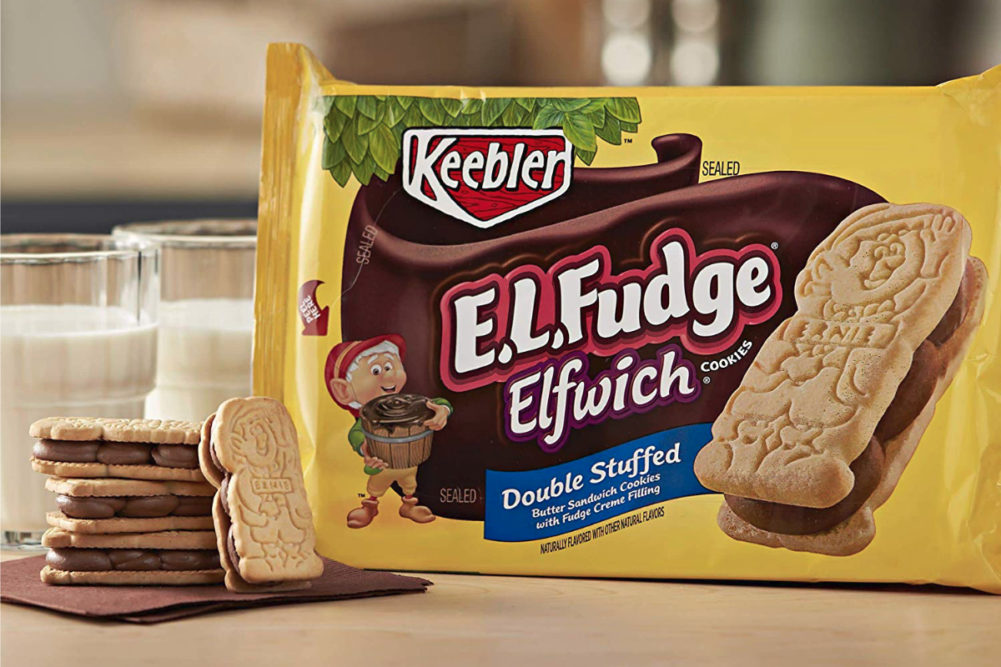There was a time Keebler Co. seemed a solid No. 2 competitor in the cookie-cracker category. Propelled by aggressive marketing efforts featuring Ernie the elf and magic ovens baking product in the Hollow Tree, Keebler would almost nip at the heels of market leader Nabisco, Inc.
That was a long time ago. The decline of Keebler and several other erstwhile significant cookie players has allowed a core segment of the category to fade.
Against this backdrop, efforts by Ferrero Group, Keebler’s new owners, to inject vitality into the brand are welcome. With a focus on reformulation, packaging and marketing, Ferrero believes Keebler has great, long-slumbering potential.
Natalie Hagstrom, general manager of cookies for Ferrara Candy Co., a Ferrero business, recently told Food Business News (sister magazine to Milling & Baking News) the potential for Keebler stands ready to be tapped.
“You start with storied, iconic brands that have really high household awareness, and it’s really just returning them to their iconic status,” Ms. Hagstrom said. “They’ve been starved of resources and investments in product, packaging and messaging to the consumer.”
A look back at Keebler’s ownership history certainly validates Ms. Hagstrom’s narrative of neglect.
Established in 1853 in Philadelphia, Keebler was acquired in 1974 by United Kingdom-based United Biscuits Holdings PLC. After struggling to generate growth and sustain profitability in the late 1980s and early 1990s, the business was sold in November 1995 to a 50-50 joint venture owned by Flowers Industries, Inc. and Invus Group Ltd.
Flowers and Invus engaged a talented new management team, led by Sam K. Reed, but the buyers’ principal focus was on cost cutting rather than injecting resources necessary for long-term growth into the business. Flowers described the transaction not in strategic terms but as a “classic leveraged buyout” and focused on the need to quickly fix what was “out of line on the cost side” of Keebler.
Kellogg Co. acquired Keebler in 2001, and the merger was celebrated as a “winning combination for consumers, customers and shareholders.” The cookie business began struggling within the first couple of years, and management said the segment would be given greater attention. Exactly what Kellogg did to bolster the cookie business never was clear, but after acquiring Pringles from Procter & Gamble Co. in 2012, it became clear cookies would not be the focus of the Kellogg snacks business.
Nabisco’s cookie business was five times larger than Keebler’s in 1995, and though Keebler later acquired Sunshine Biscuit, Mondelez International (heir to the Nabisco business) cookie sales are eight times larger than Keebler’s now, according to Information Resources Inc. Oreo Double Stuf cookies alone, with sales of $345 million, are not too far behind Keebler’s total sales of $435 million. Keebler is no longer the second largest US cookie company. It is now fourth, eclipsed also by Pepperidge Farm, Inc. and McKee Foods Corp.
Changes described by Ferrara are hardly radical — including the removal of high-fructose corn syrup and a switch to natural vanilla. New packaging was developed to increase quality and freshness, featuring modern and unifying designs across the Keebler cookie brands. The products will be available in an on-the-go format and variety packs to meet consumer snacking behaviors.
The company has launched a comprehensive marketing campaign to showcase the ingredient changes and brand story through digital and social channels and in-store displays. It’s the same playbook Ferrero used when it acquired the US chocolate business of Nestle SA. Sales of brands like Butterfinger and Baby Ruth have responded, posting double-digit gains.
A few ingredient changes won’t magically make Keebler’s aging portfolio on trend, and time will tell whether the acquired brand will gain and sustain momentum. Still, after so many years in which such efforts were lacking, the seriousness with which its new owners are pursuing the market is a promising sign not just for Keebler but for the entire cookie industry.





